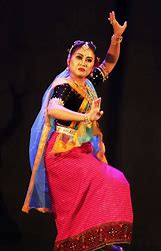The Dehing Patkai Festival is a vibrant and unique celebration held annually in the state of Assam, located in northeastern India. It is an event that beautifully showcases the region’s rich cultural heritage, its wildlife, and the adventure tourism opportunities it offers. The festival is named after the Dehing Patkai Wildlife Sanctuary, one of the most biodiverse regions in Assam. This sanctuary is known for its dense forests, wildlife, and natural beauty, making it an important location for the festival.
Location of Dehing Patkai Festival
The festival takes place in the Dehing Patkai Wildlife Sanctuary, which is located in the Dibrugarh and Tinsukia districts of Assam. This sanctuary is spread over an area of about 1,000 square kilometers and is part of the larger Brahmaputra Valley. It is situated near the Dehing River, surrounded by lush greenery, hills, and valleys, making it an ideal setting for the event. The sanctuary is rich in biodiversity, making it a natural backdrop for the celebration of Assam’s culture and wildlife.
Significance of the Dehing Patkai Wildlife Sanctuary
The Dehing Patkai Wildlife Sanctuary is the main attraction during the festival. This protected area is home to a wide variety of flora and fauna, including some endangered species. The sanctuary is known for its tropical rainforests, which are part of the Eastern Himalayas biodiversity hotspot. The sanctuary is a crucial habitat for wildlife like elephants, tigers, leopards, and various species of birds, including the endangered white-winged wood duck. The forest also supports a variety of plant species, which add to the overall ecological richness of the area.
The Festival’s Focus on Assam’s Culture
One of the key aspects of the Dehing Patkai Festival is its focus on the cultural heritage of Assam. Assam is a region with a rich and diverse cultural history, shaped by a blend of indigenous traditions and influences from various communities over centuries. The festival serves as a platform to showcase this diversity through various cultural performances and activities.
Traditional Dance and Music
At the heart of the Dehing Patkai Festival is the celebration of Assamese music and dance. Local dance forms such as Bihu, Jhumur, and Sattriya are performed during the festival. Bihu is the most well-known dance form of Assam, associated with the Bihu festival, which marks the Assamese New Year and the arrival of spring. The fast-paced movements and vibrant costumes of Bihu dancers captivate audiences and celebrate the region’s agricultural and seasonal cycles.
In addition to Bihu, the festival also features other traditional music and dance performances. Jhumur, a folk dance from the tea gardens of Assam, is another highlight. This dance is performed with rhythmic drumming and graceful movements, and it reflects the daily life of the tea workers. Sattriya, one of the classical dance forms of India, also makes an appearance, with its graceful and intricate movements that tell stories from Hindu mythology.
Cuisine and Handicrafts
The festival also offers an opportunity to experience Assamese cuisine and handicrafts. Assam is known for its distinctive flavors, with rice being the staple food. Dishes like “pitha” (rice cakes), “masor tenga” (sour fish curry), and “khaar” (a dish made with raw papaya and pulses) are commonly served during the festival. These dishes offer a taste of the region’s culinary traditions, influenced by both indigenous and neighboring cultures.
Handicrafts are another highlight of the festival. Assam is famous for its exquisite handwoven silk, particularly Muga silk, which is exclusive to the state. Local artisans showcase their skills by displaying intricate designs on traditional garments like mekhela chadar (a traditional Assamese attire for women) and gamocha (a handwoven towel, often used as a symbol of respect). The festival helps preserve and promote these local crafts by providing a platform for artisans to sell their products.
Highlighting Wildlife Conservation
The Dehing Patkai Festival plays a significant role in raising awareness about wildlife conservation. The Dehing Patkai Wildlife Sanctuary is home to various endangered species, and the festival helps highlight the importance of preserving these animals and their habitats.
Endangered Species in Dehing Patkai
The sanctuary is known for its biodiversity, and it is home to several species that are considered endangered or vulnerable. Some of the key species found in the sanctuary include:
- Asian Elephants: The sanctuary provides a vital habitat for Asian elephants, one of the largest land mammals in the world. These elephants are often seen roaming in herds through the forest.
- Royal Bengal Tiger: While elusive, the Royal Bengal tiger is another key species in the region. The forest’s dense vegetation provides a safe home for these tigers.
- Leopards: Dehing Patkai also shelters leopards, a species that thrives in the sanctuary’s dense, undisturbed forests.
- White-Winged Wood Duck: This rare and endangered bird species is one of the highlights of the sanctuary’s avian population. The sanctuary’s wetlands and forested areas provide essential habitat for this bird.
The festival raises awareness about these species and the need to protect their habitats. It emphasizes the importance of maintaining the balance of nature and conserving biodiversity.
Conservation Efforts and Eco-Tourism
The festival also promotes eco-tourism and sustainable tourism practices. By educating visitors about the importance of wildlife and habitat conservation, the festival encourages responsible tourism that minimizes environmental impact. Local guides are trained to provide visitors with an understanding of the region’s ecosystems, wildlife, and conservation challenges.
In addition to this, the festival supports various community-driven conservation initiatives. By involving local communities in conservation efforts, the festival helps create a sense of ownership and responsibility among the people who live near the sanctuary. These initiatives often include anti-poaching measures, habitat restoration, and the creation of wildlife corridors to help animals move freely across the landscape.
Adventure Tourism at the Festival
Another significant aspect of the Dehing Patkai Festival is its emphasis on adventure tourism. Assam, with its diverse landscapes and natural beauty, offers a variety of outdoor activities for adventure enthusiasts. The festival provides opportunities for visitors to experience the wilderness of the Dehing Patkai region through adventure activities like trekking, camping, and river rafting.
Trekking and Nature Walks
The dense forests and hilly terrain of the Dehing Patkai Wildlife Sanctuary provide excellent opportunities for trekking and nature walks. These activities allow visitors to explore the sanctuary’s biodiversity up close while enjoying its stunning landscapes. Guided treks lead participants through trails surrounded by lush greenery, rivers, and waterfalls, offering an immersive experience in nature.
River Rafting and Camping
The Dehing River, which flows through the sanctuary, is an ideal spot for river rafting. The river’s currents provide a thrilling experience for adventure enthusiasts. Camping in the forest or along the riverbanks adds to the festival’s adventure appeal, allowing visitors to spend a night under the stars in the heart of nature.
Conclusion
The Dehing Patkai Festival is an annual celebration that showcases the cultural richness, wildlife, and adventure tourism opportunities of Assam. Held in the Dehing Patkai Wildlife Sanctuary, the festival highlights the importance of wildlife conservation while providing a platform to celebrate the state’s diverse cultural heritage. Through its various performances, traditional foods, and adventure activities, the festival has become an important event that brings together locals and visitors alike to appreciate the beauty of Assam’s landscapes and the need to protect its natural resources. The festival serves as both a cultural and environmental celebration, reinforcing the message of sustainable development and conservation for future generations.


